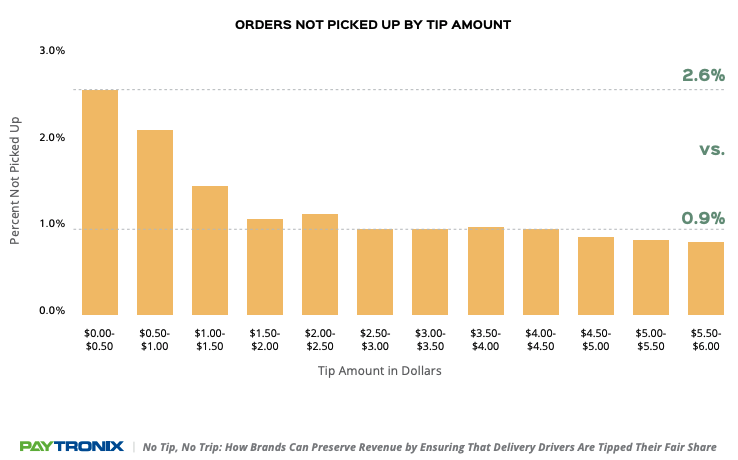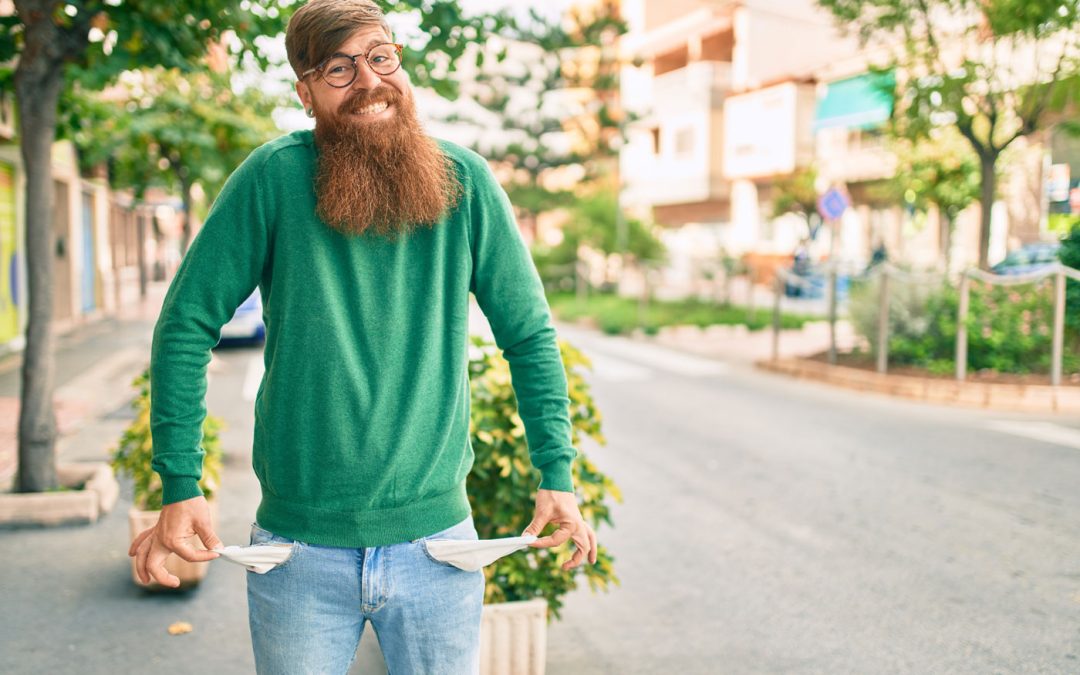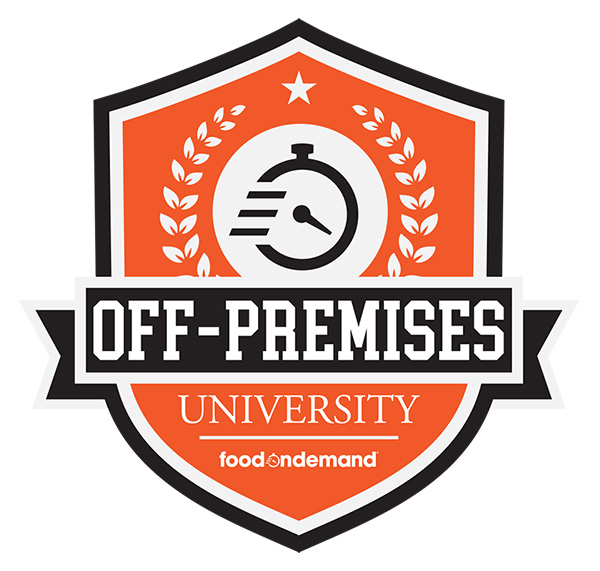The lower the tip, the less chance a delivery driver will pick up your food. Paytronix dug into how tips affect delivery acceptance rates.
In a report titled “No Tip, No Trip: How Brands Can Preserve Revenue by Ensuring That Delivery Drivers Are Tipped Their Fair Share,” the multi-pronged payments, CRM, loyalty and delivery services company saw a significant correlation between no-tip orders and abandoned meals.
According to the report, as might be understood by routine delivery users, the smaller the tip, the less likely it was that an order was accepted.
“On average, about 0.9 percent of orders with a tip over $2.50 are not picked up, and as tips become larger, that total drops to around 0.7 percent,” wrote report author Lee Barnes, who leads the Data Insights team at Paytronix.

He went on to say orders with no tips at all are not accepted 2.6 percent of the time.
When orders are left unclaimed, it’s a burden on the whole chain from restaurant to delivery platform to customer, but it’s especially damning for the restaurant. The customer doesn’t get their food, but they do get a refund. The platform generally refunds the order to the customer. The restaurant, however, typically is stuck with a wasted meal and packaging.
Barnes wrote that one solution would be to encourage tipping in the delivery process, writing “encouraging tipping through messaging in the checkout section could drive enough in gratuities to decrease costly undelivered orders.”
The majority of delivery orders do include some level of tipping; the company found that 73 percent of such orders contain a tip. The customers responsible for the other 27 percent of orders, however, could use some encouragement and training to tip on the platforms. Cash tips are all but invisible and according to drivers who share experiences on forums, can’t always be trusted.
One forum user, going by the handle OfficerBanana53101 said that even writing “cash tip” was not enough, “We can’t see messages until we accept the order sadly. But even then, I had orders that said cash tip and never received one. So, even if it did, there’s a lot of trust issues when it comes to that.”
With inflationary pressures, especially when it comes to fuel, Barnes postulated that this correlation could get even stronger and more low- and no-tip orders would be ignored.
“The correlation between tipping and delivery fulfillment is likely to continue, particularly if fuel costs remain at the levels seen in the first half of 2022,” wrote Barnes. “Once you identify problem locations, taking advantage of messaging capabilities in your platforms and apps will go a long way towards ensuring that your delivery drivers are tipped and your orders make it out the door.”




